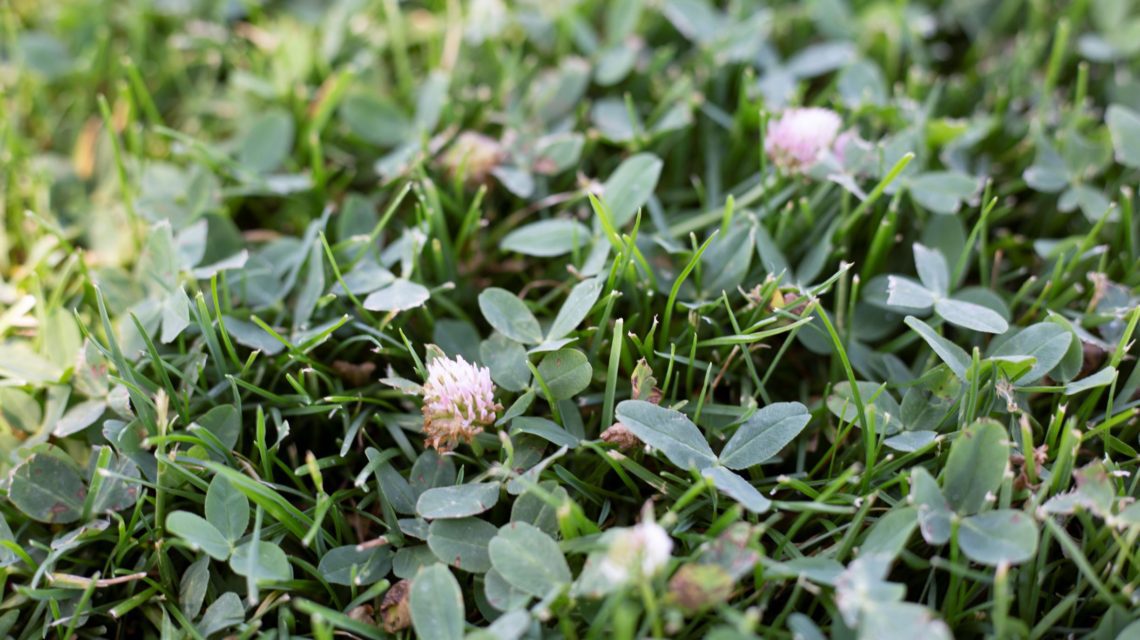Did you know that some of the weeds growing in your yard have medicinal properties, and some are edible? If you’re lost in the woods, that knowledge might come in handy, but most of us are probably more interested in learning how to get rid of the weeds. Whether you’re planning an escape to the mountains or trying to clear the weeds in your yard, this guide to common weeds in Utah can help!
Skip to a Section:
Black Medic
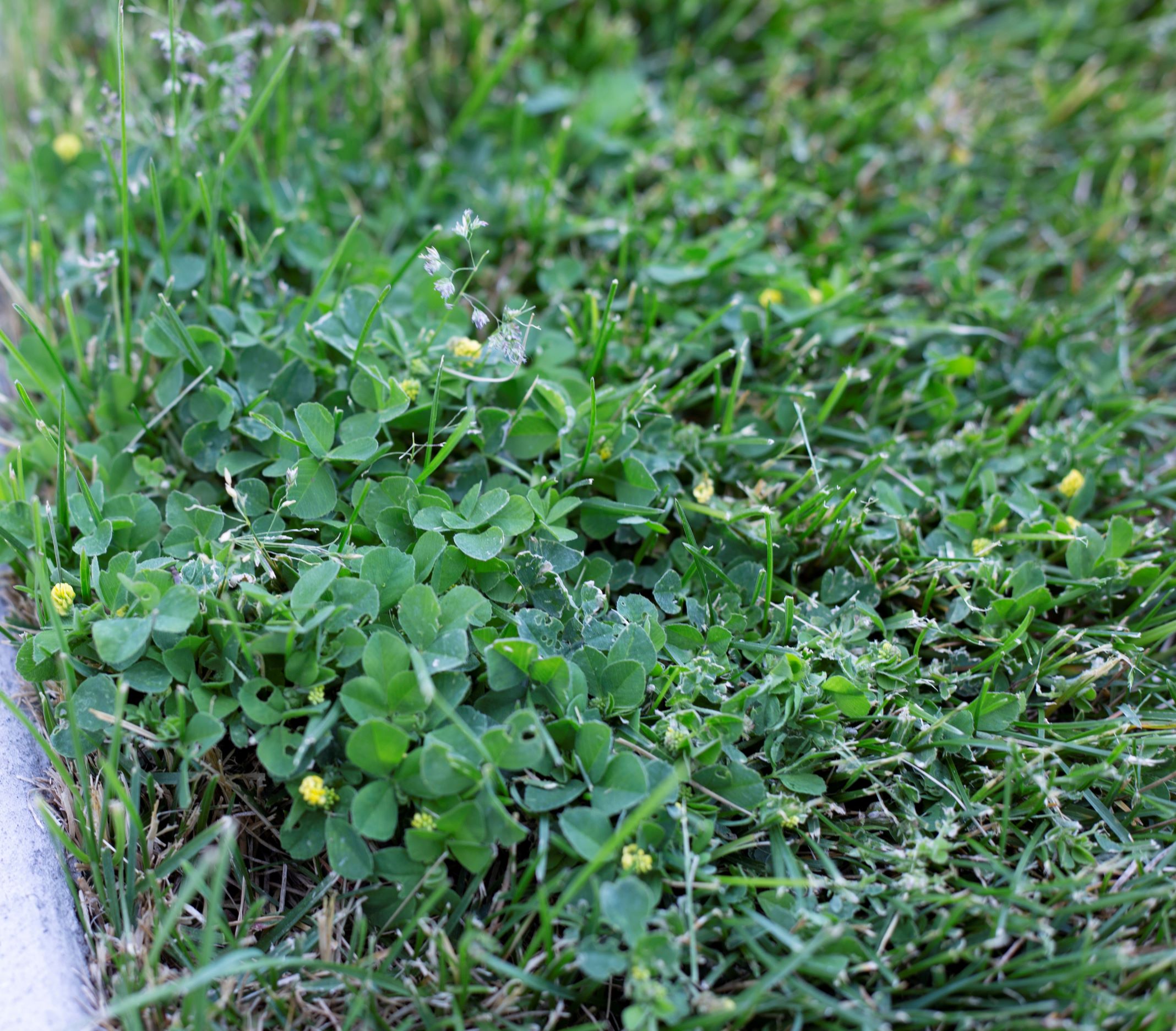

First up is black medic. Black medic looks like clover, but it has jagged leaves and tiny yellow flowers that look like pom-poms. It is an annual weed that grows during the summer and thrives in compact soil.
Like other weeds in Utah, black medic will creep into lawns with sparse growth and slowly take over. Because black medic thrives in compact soil, it’s a good indication that your lawn needs to be aerated.
While its seeds are edible and its leaves may be used as a mild laxative, black medic may also cause blood clots in susceptible people, so consume it with caution. If you want to get rid of this weed, keep in mind that it is resilient and usually needs to be sprayed multiple times before it will die.
Chickweed
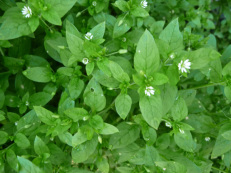

Chickweed is often used as a ground cover in flowerbeds because it spreads quickly and has dainty, white flowers with heart-shaped petals. Like many groundcovers, however, chickweed can overflow from flowerbeds and invade lawns.
As an annual weed, chickweed dies each year and promptly grows back from seed, germinating in fall or early winter in Utah. Because this weed can quickly overtake lawns, it needs to be treated with preventative weed sprays and weed control before it grows out of hand.
Chickweed also has medicinal properties and is sometimes used topically to calm inflammation or burns. However, be cautious with this weed because its benefits have not been thoroughly researched, and it may be toxic if ingested.
Clover
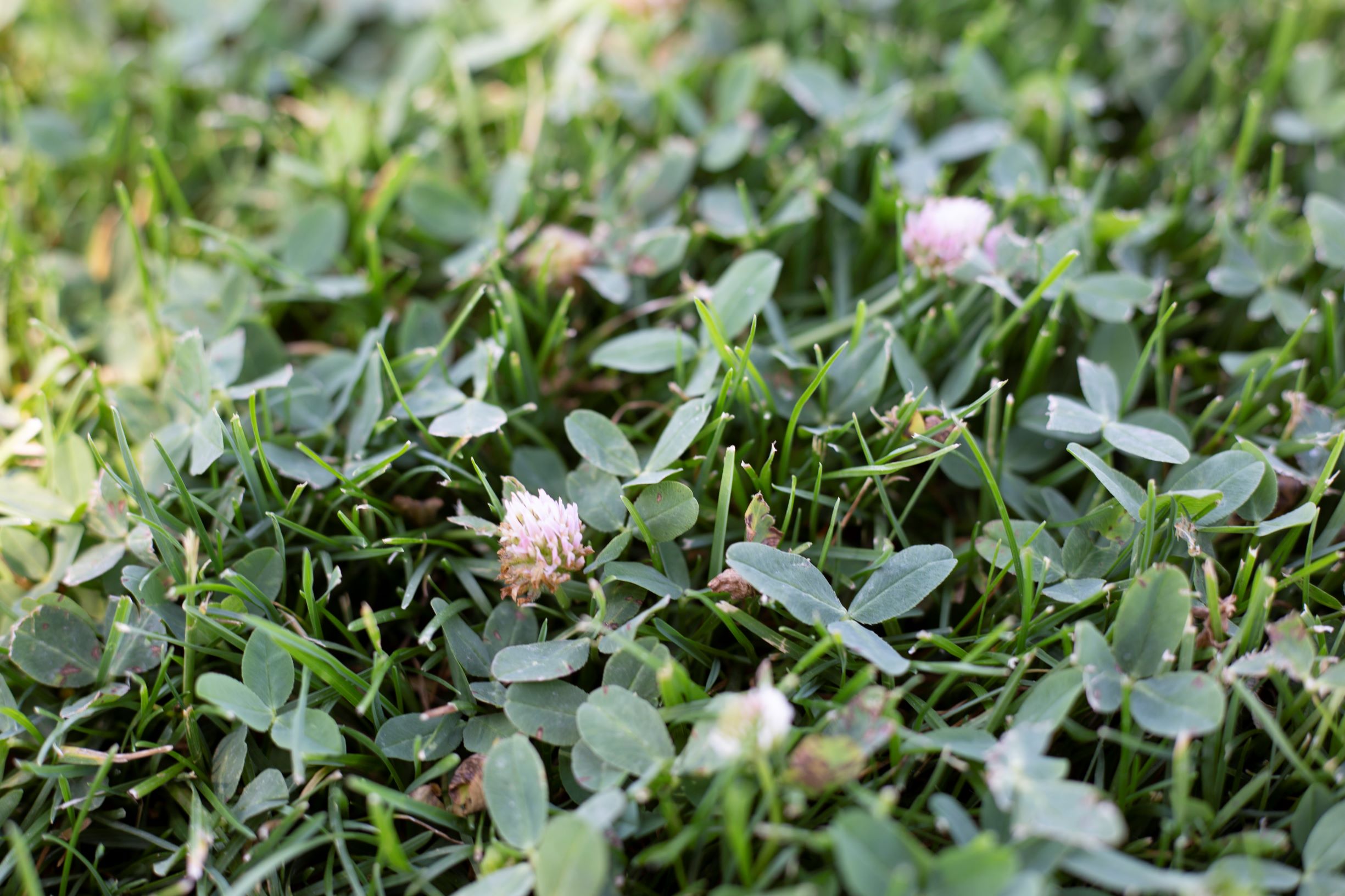

Clover has small, white, pom-pom-like flowers and three-leaf clusters. It is a perennial weed and grows during spring, summer, and fall. Clover is one of the more persistent weeds that may invade your lawn, so it will likely take multiple sprays to eliminate it from your yard and up to a year to fully control.
While other plants—like grass—struggle to survive in nitrogen-deficient soil, clover thrives. Nitrogen-deficient, slightly over-watered soil is the best combination for clover, so you can try to prevent it by watering properly.
Some types of clover are edible, but others can be toxic—specifically those in warmer climates—so be cautious when foraging for them.
Creeping Bell Flower
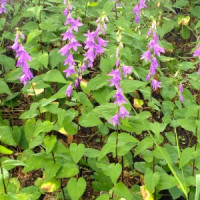

With its light purple bell flowers and heart-shaped leaves, creeping bell flower is another perennial plant that looks beautiful in flowerbeds but quickly encroaches on lawn areas. It tends to strangle other plants and can regenerate even from small pieces of roots. Like clover, this weed blooms in spring, summer, and fall.
Clay-heavy, dry soil and partly shady areas are ideal conditions for creeping bell flower, so it thrives in Utah. However, basic weed killers should effectively eliminate this weed from your yard.
Creeping bell flower is edible and usually tastes best after being cooked. Its health benefits are largely unknown, so it’s rarely used as a medicine.
Dandelion
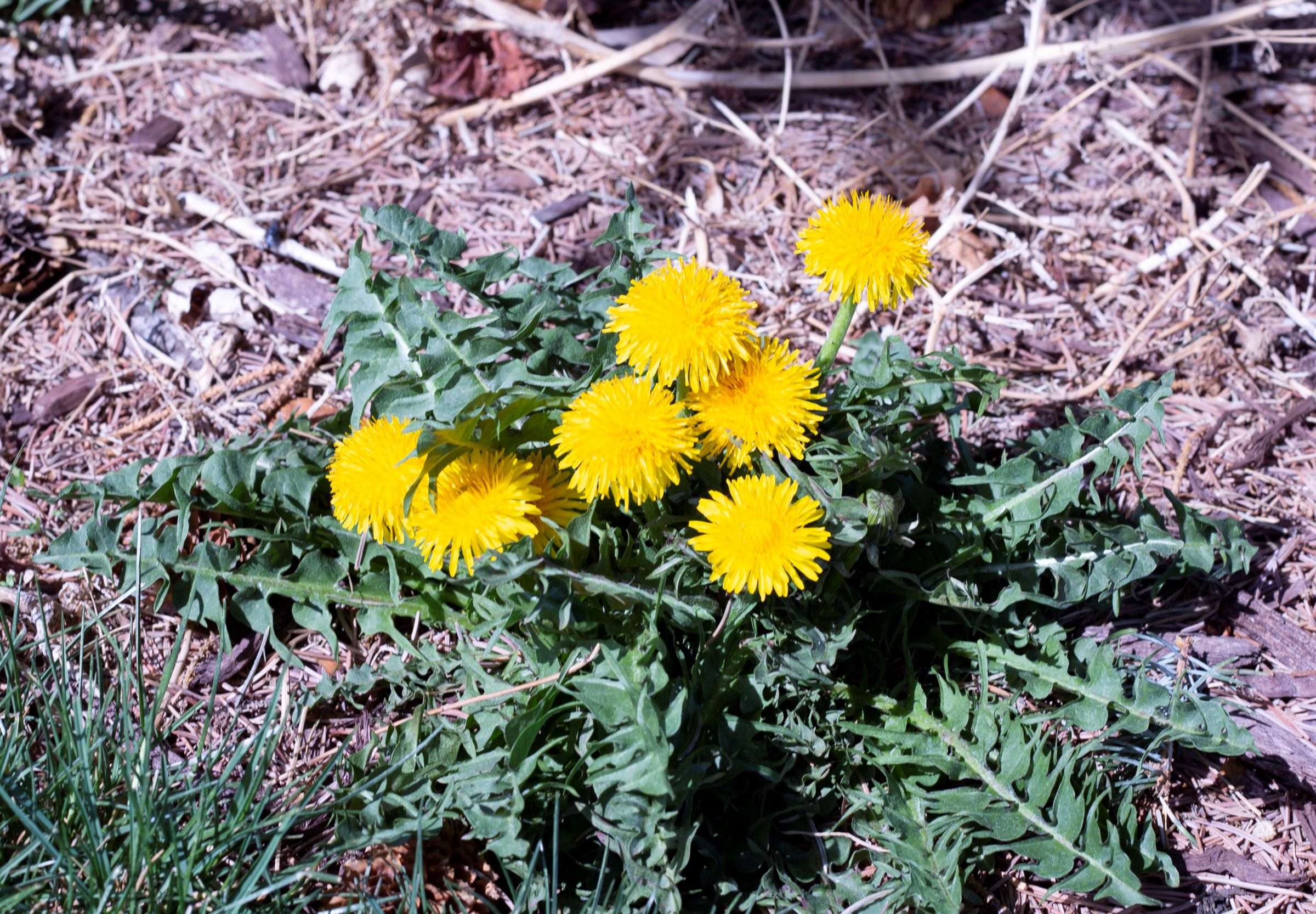

Dandelions have spear-shaped leaves and distinctive yellow flowers that turn into fluffy, white seed heads. Surprisingly, all parts of dandelions are edible, but they have a very bitter taste. As a perennial plant, they come back every year and grow in spring, summer, and fall.
Dandelions are resilient and can grow in any type of soil—especially in struggling lawns with dry soil or sparse growth. Controlling dandelions is much easier if you can stop them from spreading, so be sure to treat dandelions before they spread their seeds.
Dock
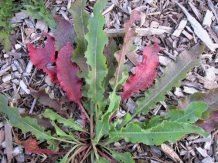

You can identify dock by its large leaves with crinkled edges (and purple dots in some cases). As a hardy perennial, dock has a deep taproot that keeps it firmly rooted and leaves that can grow to be a foot long.
This weed grows best in moist soil, but it can survive with little rain and in almost any soil conditions. If you’re trying to eliminate this weed from your yard, it will likely take multiple weed control sprays to get rid of it.
Dock is edible and has health benefits, but because it contains a toxin called oxalic acid, it should be consumed only in small quantities. Generally, people only eat the young leaves because they taste better and have less oxalic acid than mature leaves.
Field Bind Weed (Morning Glory)
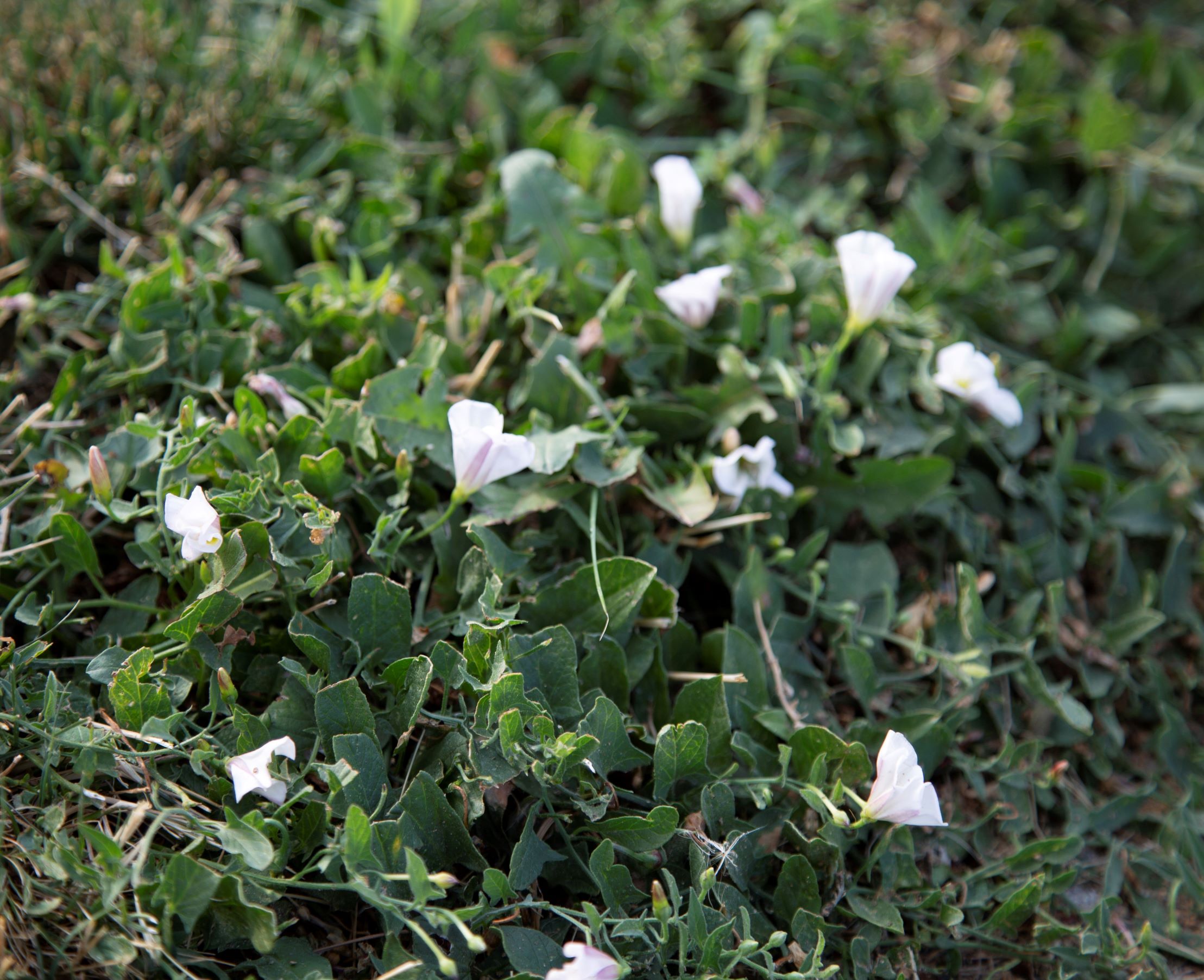

Field bind weed, commonly known as morning glory, is a vine-type plant with arrow-shaped leaves and white flowers. Like many plants, morning glory prefers direct sunlight and fertile soil, but it is very hardy and can survive in harsh conditions.
Controlling morning glory is easiest when the plant is still young because it’s a perennial plant with a strong root system—over time, the taproot can grow 6-10 feet deep. Once this weed is established, it will likely take multiple weed control sprays to get rid of it. It may even take years to control morning glory.
Henbit
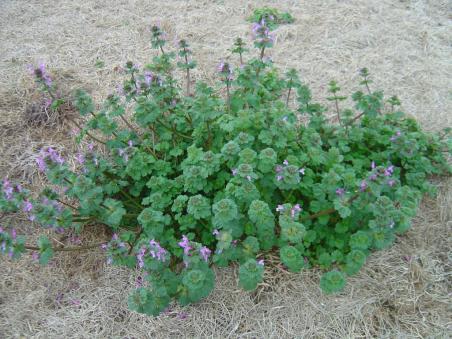

Henbit is an annual weed with purple oblong flowers that appear in early spring, red square stems, and squat leaves. This plant prefers to grow in wide-open areas. Because of this, henbit is usually only a problem in freshly seeded or sparse lawns, and it can be easily eliminated with lawn weed sprays.
Related to mint and considered an herb, henbit is often made into a tea that aids digestion and increases energy, but drink carefully because it can double as a laxative.
Kochia
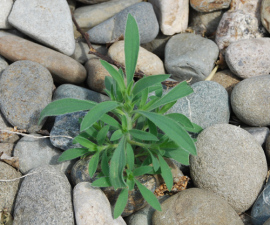

Have you ever wondered where tumbleweeds come from? Mature kochia weeds become tumbleweeds to help spread their seeds. Kochia (or ragweed) is an annual weed with yellow/green leaves and a round stem.
It germinates during spring, summer, and fall and can grow 5-6 feet tall. Once kochia matures enough to produce seeds, it is considered toxic for grazing animals. It also emits a toxin into the soil around it that prevents other plants from growing.
Though toxic for other plants and some animals, people can safely eat small amounts of kochia leaves and seeds. However, large amounts of kochia can be harmful because it contains oxalic acid. If you’re not interested in eating kochia, you can successfully eliminate it with any basic weed killer.
Mallow
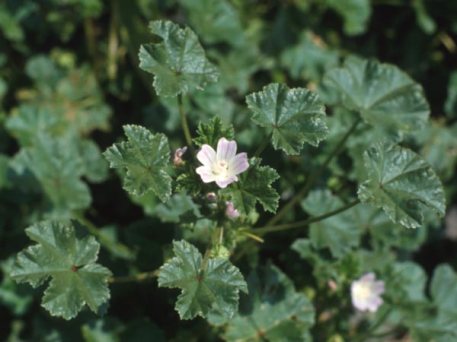

Another name for mallow is cheese weed because its seed heads form a thick circle that resembles a cheese wheel. Mallow has hexagonal leaves, small white flowers, and a deep taproot. Interestingly, mallow is edible, and secretions from its roots were used to make marshmallows before other ingredients replaced it. Mallow is relatively easy to eliminate because it can only grow from its seeds and is very susceptible to weed control sprays.
Mullein
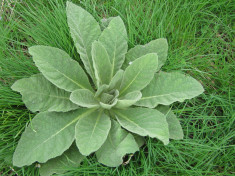

Mullein is a semi-perennial weed with large, soft yellow-green leaves and yellow flowers. This plant thrives in mild springtime temperatures and can grow up to 6 feet tall. Because it often houses diseases and insects, mullein can cause a lot of problems for other plants in your yard.
Though it may cause problems for other plants in your yard, mullein has some health benefits. Tea made from mullein is sometimes used to alleviate respiratory illnesses, and a salve made of its leaves can help soothe earaches.
Newly planted or young lawns are the perfect environment for mullein to grow because it needs open space in order to germinate. Keep a close eye on your lawn so you can pull up mullein weeds as soon as possible. You can also use broadleaf weed sprays to get rid of mullein.
Oxalis
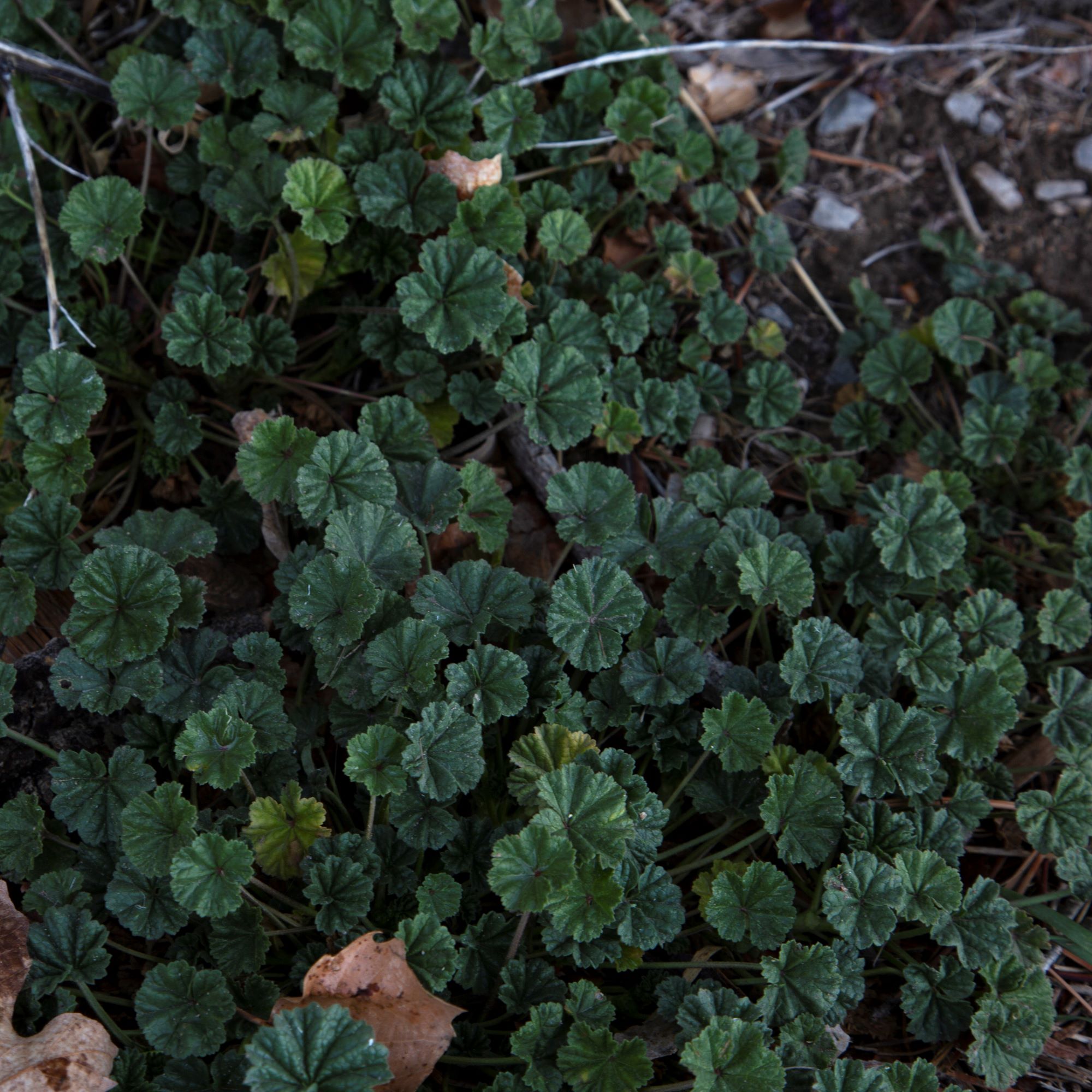

Oxalis is another perennial weed that can bloom throughout the year. It grows low to the ground and resembles clover, but its flowers are yellow with five petals, and the leaves turn red in the fall. This weed is difficult to get rid of—it will take multiple sprays with a weed killer for it to die. What’s worse is that it spreads rapidly, can grow in full sun or shade, and doesn’t need moisture to grow well. Oxalis is edible, but only in small portions because of its high oxalic acid content and sour flavor.
Pigweed
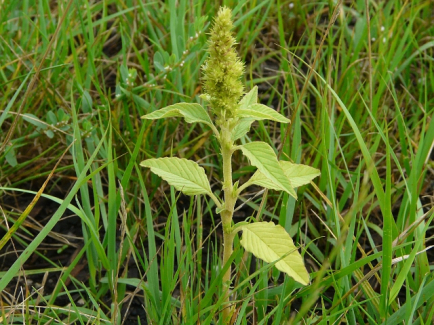

Pigweed is an annual weed with shiny leaves and a red/purple stem that grows throughout the year—especially in warmer seasons. It grows quickly and chokes out other plants, but it can be controlled with preventative weed sprays. All parts of the pigweed plant can be consumed, and in some parts of the world, people use pigweed tea medicinally to treat diarrhea and other ailments.
Plantain
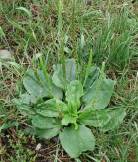

Plantain has oval leaves with waxy edges and can produce up to 20,000 seeds. It grows in early spring and mid-fall and is more common in lawns with short grass and compact or disturbed soil. People have used plantain as an anti-inflammatory for skin irritations and as a tea to soothe sore throats. Eliminating this plant from your lawn and garden can be difficult because plantain can survive in any soil type and spreads quickly. However, it can be controlled with normal broadleaf weed sprays.
Puncture Vine
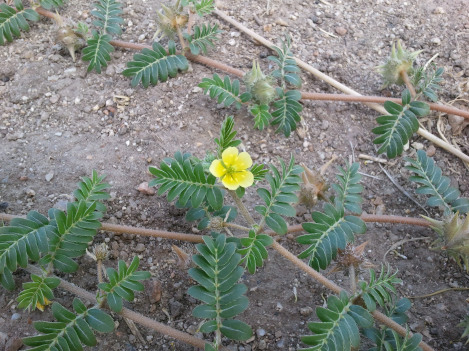

Infamous for its poky seeds that get caught in socks and pants, puncture vine is a nasty weed that is difficult to eliminate. Puncture vine has feather-like leaves and small yellow flowers growing on reddish, round stems that hug the ground. It grows in dense mats, sprouts during the summer and fall, and can only be killed with strong chemicals or high heat because the seeds are hardy. The seeds are shaped like a goat’s head, inspiring the common nickname, goathead, for puncture vine.
Purslane
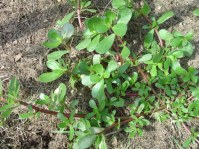

Purslane has fleshy reddish stems and teardrop leaves. Occasionally, yellow flowers will also emerge. Although it prefers to grow alongside flowerbeds and the edges of the lawn, purslane can grow in harsh conditions and usually invades the lawn after people plant it in their flowerbeds.
This annual plant is edible and nutritious because it contains omega-3 fatty acids and other important vitamins. People have also used purslane to treat psoriasis and arthritis, among other things. Make sure you consider the possible health benefits of this plant before eliminating it—some people consider it a superfood. If you want to remove purslane from your yard, almost any broadleaf weed spray and pre-emergent combination should do the trick.
Red Sorrell
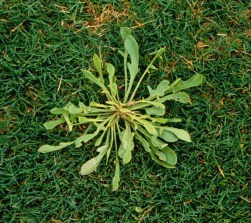

Red sorrell is a perennial weed with long, slender leaves that look like spears. It sprouts in early spring, spreads through its hardy root system, and flourishes in acidic soils.
Because red sorrel is edible and has a lemony flavor, it is often used to make wine or curdle cheese. People sometimes use red sorrel as a medicine, but little research has been done regarding its effectiveness. This stubborn weed can be eliminated with broadleaf weed control products, but it may take multiple sprays.
Shepherd’s Purse
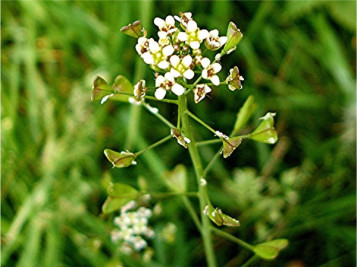

Shepherd’s purse is an annual plant that blooms in early spring. It has white flowers atop long stems and seed pods that look like purses shepherds used to carry. Though it’s considered a weed, shepherd’s purse can be used medicinally to stop hemorrhages and diarrhea, among other things. This weed is controllable with normal broadleaf weed sprays and is relatively easy to eliminate.
Spurge
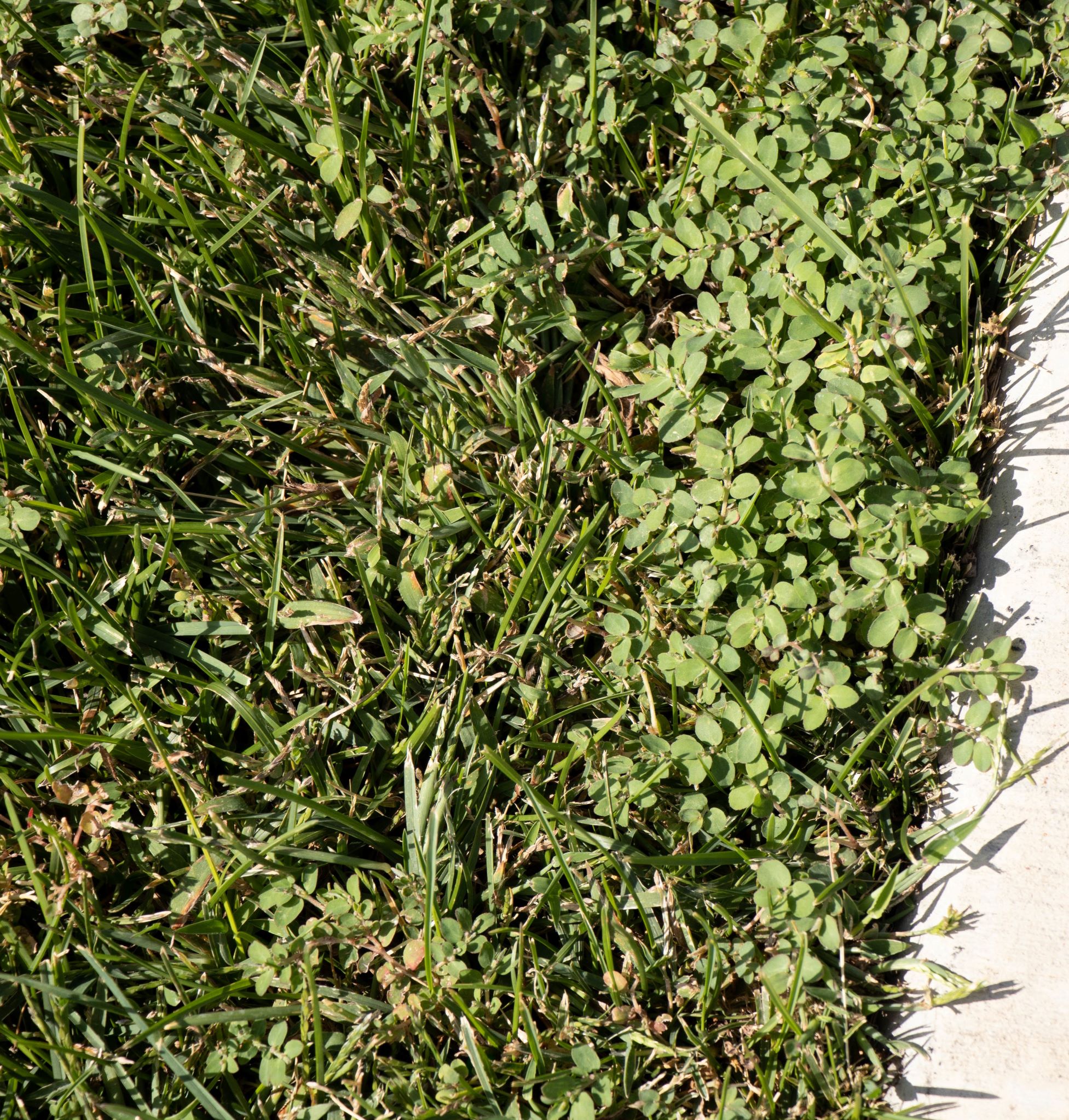

Spurge is a nasty, common weed in Utah lawns, characterized by its oblong, purple-spotted leaves and small pink flowers. As an annual weed, spurge dies off each year, but it can spread quickly through its seeds. It shows up in hotter months, grows in mats near lawn edges, and produces a milky sap that can cause skin inflammation.
Unlike other weeds, spurge is inedible and can cause vomiting and diarrhea if ingested. The good news is that spurge is controllable with pre-emergent weed sprays that are included in Stewart’s lawn care program.
Thistle
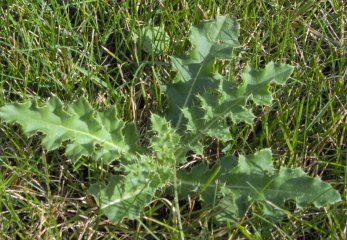

With its distinct blue or purple flower, spiny leaves, and ability to grow up to 6 feet tall, thistle is hard to miss. Thistle stalks and seeds are edible, and people sometimes use thistle as a medicine. Sometimes people plant it to attract hummingbirds and butterflies, but because it can produce up to 7,000 seeds, thistle spreads quickly and causes problems.
Getting rid of thistle is difficult—it can take more than a year to control with weed sprays. Because it’s an annual weed, it may be easier to eliminate with a combination of weed control sprays and preventative (pre-emergent) weed treatments.
Violets
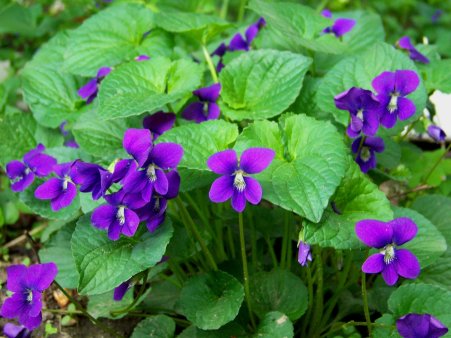

With their dainty, purplish-blue flowers and delicate, heart-shaped leaves, violets are attractive plants. Though violets are beautiful and often planted as a groundcover, they can quickly overtake other plants and invade your lawn. Once they creep into the lawn, they are hard to get rid of—you’ll need to carefully spray a non-selective weed control like Round-up to eliminate them.
Violets may be obnoxious in your yard, but they are also edible. People make herbal tea with the flowers and create a salve with the leaves to calm irritated skin.
Whitetop (Pepperwood)
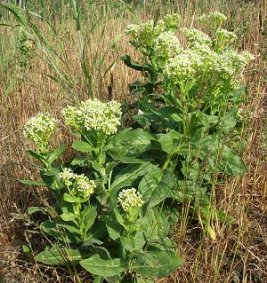

Characterized by bunches of white flowers atop a 2-foot-long stem and large leaves, the name, “whitetop,” describes this weed well. Though whitetop is an edible plant, people recommend eating only small portions, and its health benefits are unknown. This weed is notorious for how quickly it spreads. As a perennial, it can send out more than 400 shoots each year, overtaking large areas in a matter of months.
Whitetop is a hardy perennial with an extensive root system that can go 15 feet deep and an ability to withstand drought conditions. Eliminating this weed from your yard is not easy, but people have the most success when they spray whitetop with weed control in May and June.
Yarrow
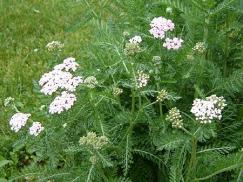

Yarrow is a perennial weed with feather-like leaves and white or pink flower groupings. Yarrow is edible, has various health benefits, and is often used as a garnish or spice. Additionally, people use this plant as a medicine for fevers, colds, diarrhea, etc. As a persistent weed with a complicated root system, yarrow is hard to eliminate from the lawn, but with consistent treatments, it can be done.
Crabgrass
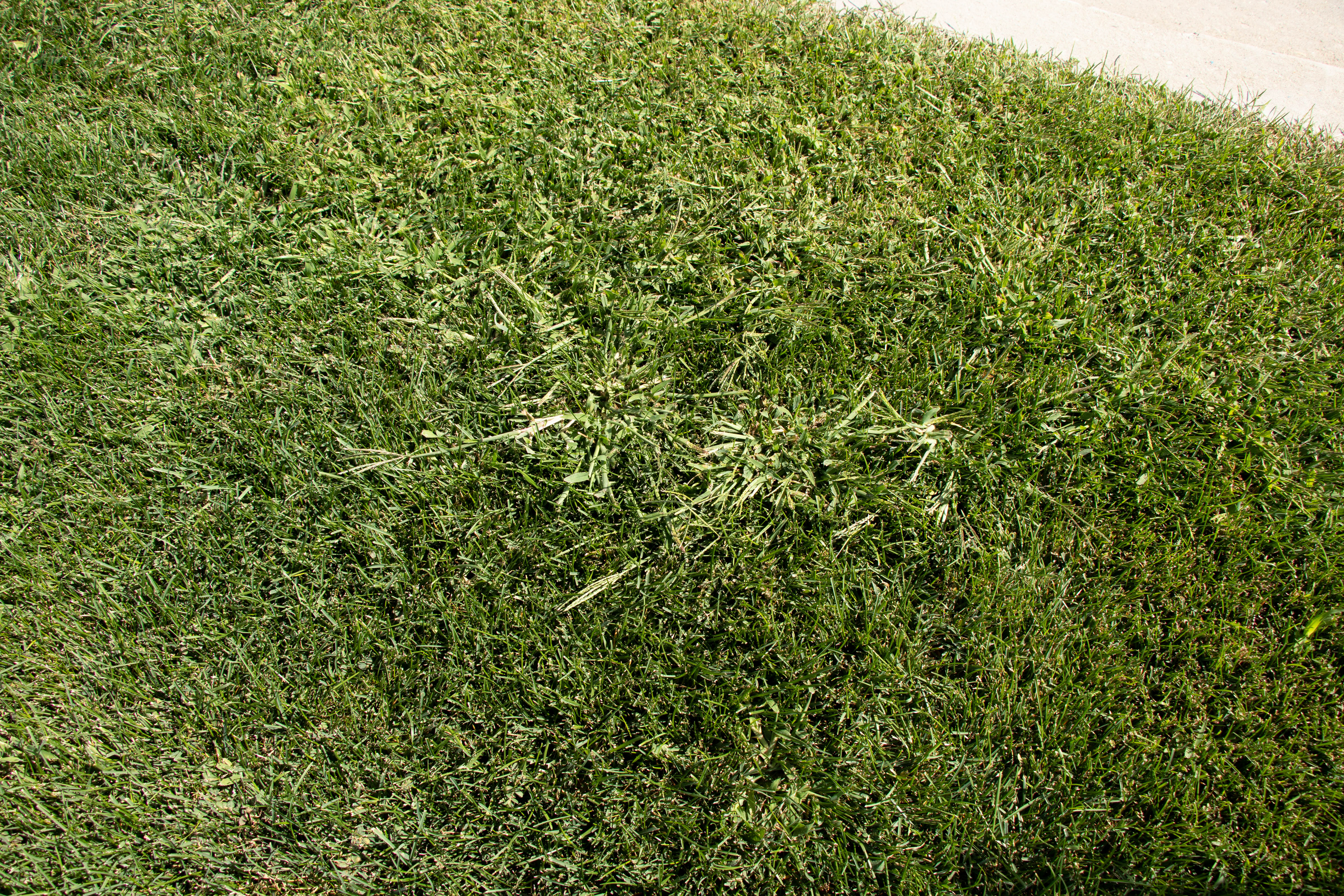

Crabgrass has long, thin stems with flat grass blades and grows in clumps. It emerges in the warm summer months and is common in Utah, especially in lawns. As an annual weed grass, crabgrass dies off at the end of each year and regrows from seed the following year. Because of this, crabgrass is controllable with weed preventative sprays that stop the seeds from germinating in the spring. However, once the crabgrass emerges from the soil, the only ways to get rid of it are to spray it with non-selective weed killer (like Round-up) and pull it out or to wait until it dies in the fall and pull it out.
Goosegrass
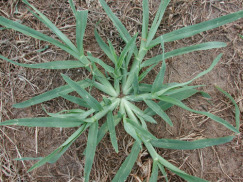

Goosegrass is also a common annual weed grass that comes up in the summer. Just like crabgrass, goosegrass is controllable with weed preventative sprays applied in the spring and can only be killed with non-selective weed killer once it starts to grow. This weed grows flat and wide, has thick blades with round, white stems at the base, and is sometimes confused with crabgrass.
Perennial Weed Grasses
Perennial weed grasses all have a root system similar to the Kentucky bluegrass in your lawn; unlike annual grasses, they hibernate in the winter and return every year. Only non-selective weed killers that eliminate all plant life can get rid of perennial weed grasses. To get rid of perennial weed grasses in your lawn, carefully spray them with a non-selective weed killer (like Round-up), then dig them out of the lawn and overseed to fill in the bare areas. While this method will successfully eliminate the weed grasses from your lawn, it will also hurt the good grass in your lawn, so be cautious when using non-selective weed sprays.
Bermuda Grass
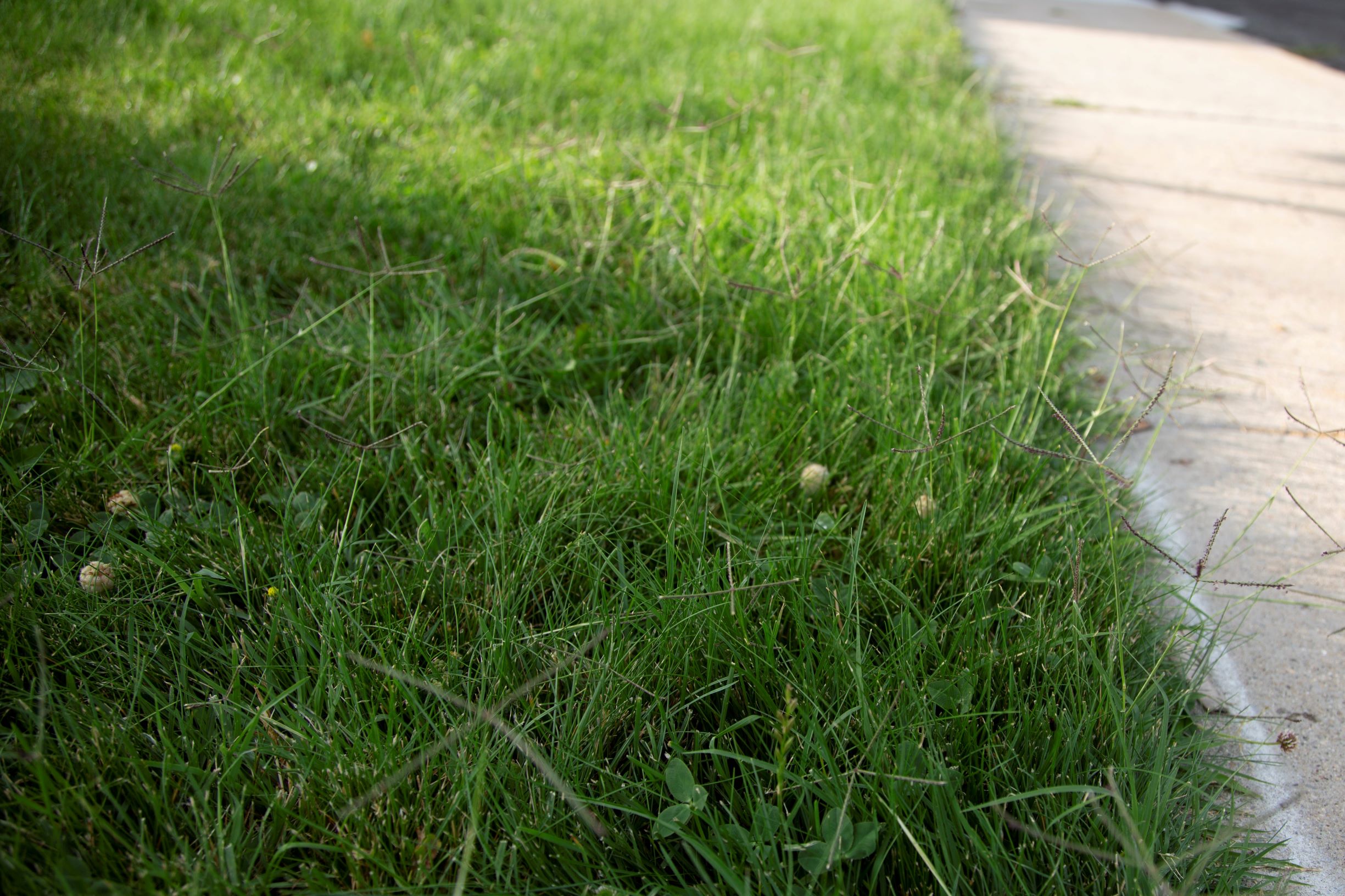

As a perennial weed grass, Bermuda grass stays year-round, hibernating in the winter just like your lawn. You’ll notice it has thinner blades that turn yellow in early fall, much sooner than the rest of your lawn. It sends out runners, has a fairly shallow root zone, and has seed heads that look similar to crabgrass.
Foxtail
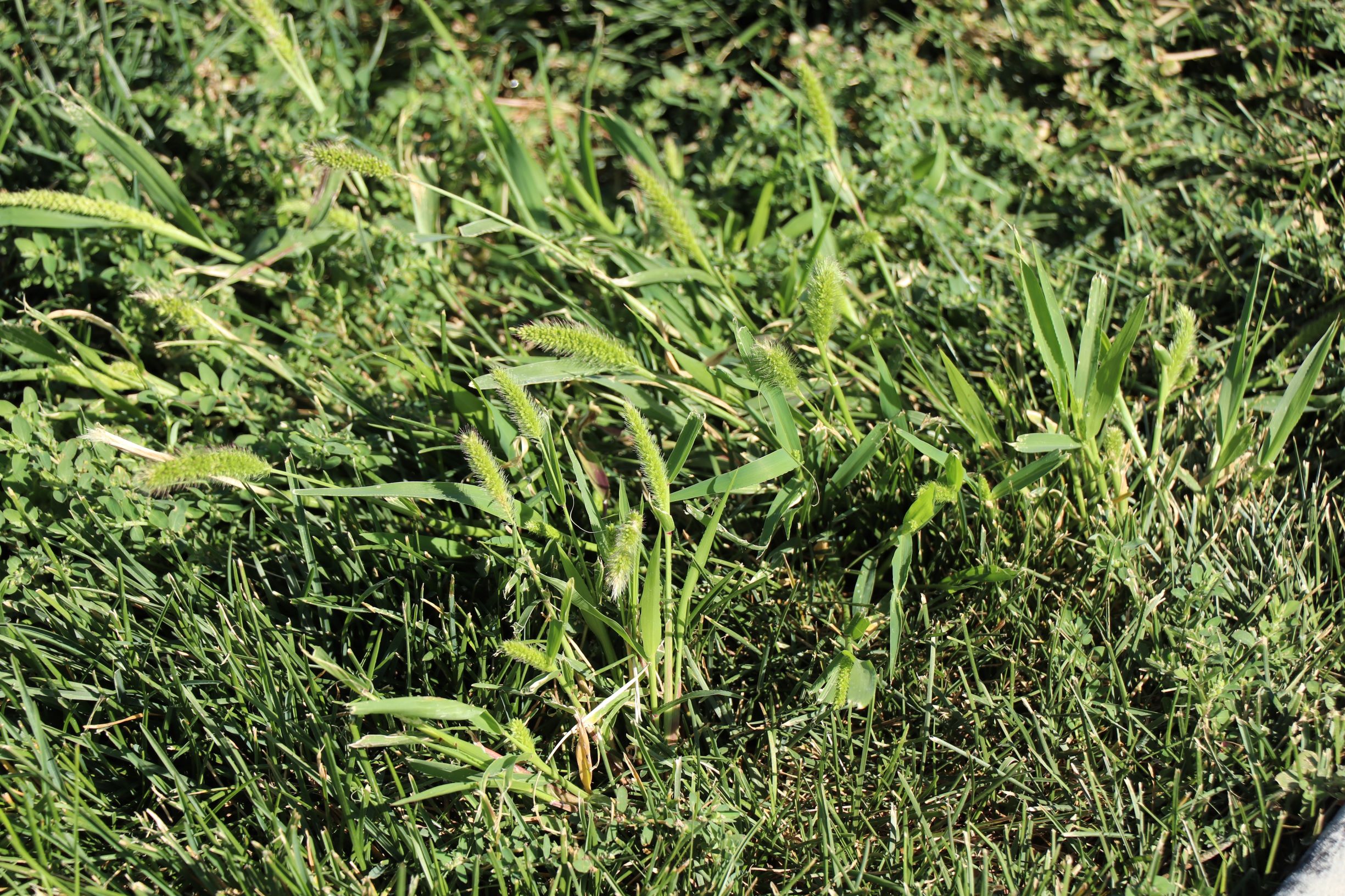

Foxtail has a distinct, fuzzy seed head that looks like a tail, smooth, rolled grass blades, and long hairs at the base of each blade. The seed heads can grow 3 inches long and spread quickly by hitching rides on animals and people.
Poky foxtail seeds can cause major health problems for dogs when they become lodged in their fur or burrow deep into their skin and ears.
Nimblewill
Nimblewill is a thin, wiry grass that is very shade and drought tolerant. It grows in mats and is a warm-season grass.
As a warm-season grass, it goes dormant earlier than most lawns in Utah, leaving dead patches in lawns as early as September or October.
Orchard Grass
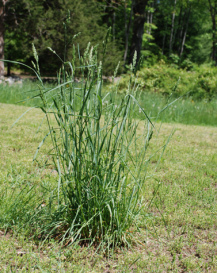

Orchard Grass is a cool-season weed grass that spreads quickly. It has rough, flattened grass blades and long stems, and it grows in tufts.
This grass is often used as feed for livestock and as ground cover in orchards.
Quack Grass
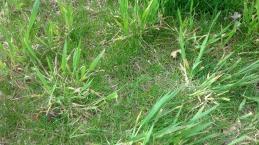

Quack grass is a cool-season grass, which means it grows best in late fall and spring in Utah. Quack grass has relatively short, fat grass blades that are pinched at the end and form round lumps at the stem.
As a competitive adaptation, quack grass can send chemicals into the soil to prevent other plants from growing. This allows it to grow quickly and unchallenged.
Tall Fescue
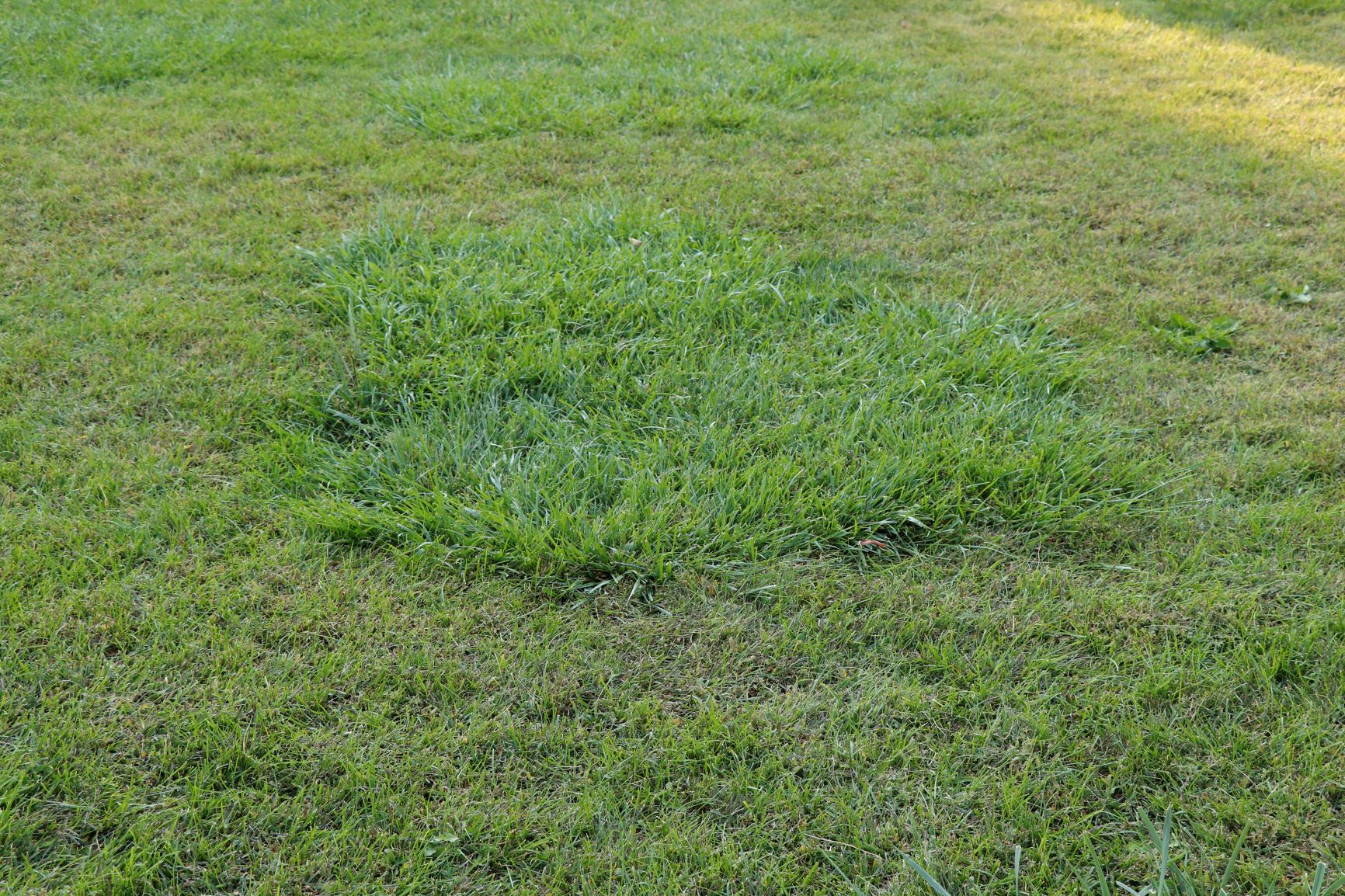

Tall fescue is another perennial, wide-bladed weed grass that grows throughout the spring, summer, and fall. It forms coarse clumps that are sometimes red at the base with grass blades that are rolled near the stem. If it’s planted on its own as a turfgrass, tall fescue can be a resilient, versatile lawn. However, in Utah, tall fescue is often considered a weed grass because it invades Kentucky bluegrass lawns and looks terrible.
Stewart’s has been eliminating weeds from lawns for almost 50 years, so if you need help with weed control in your lawn or flowerbeds this year, call or text Stewart’s at 801-226-2261 for a free quote and more information!



